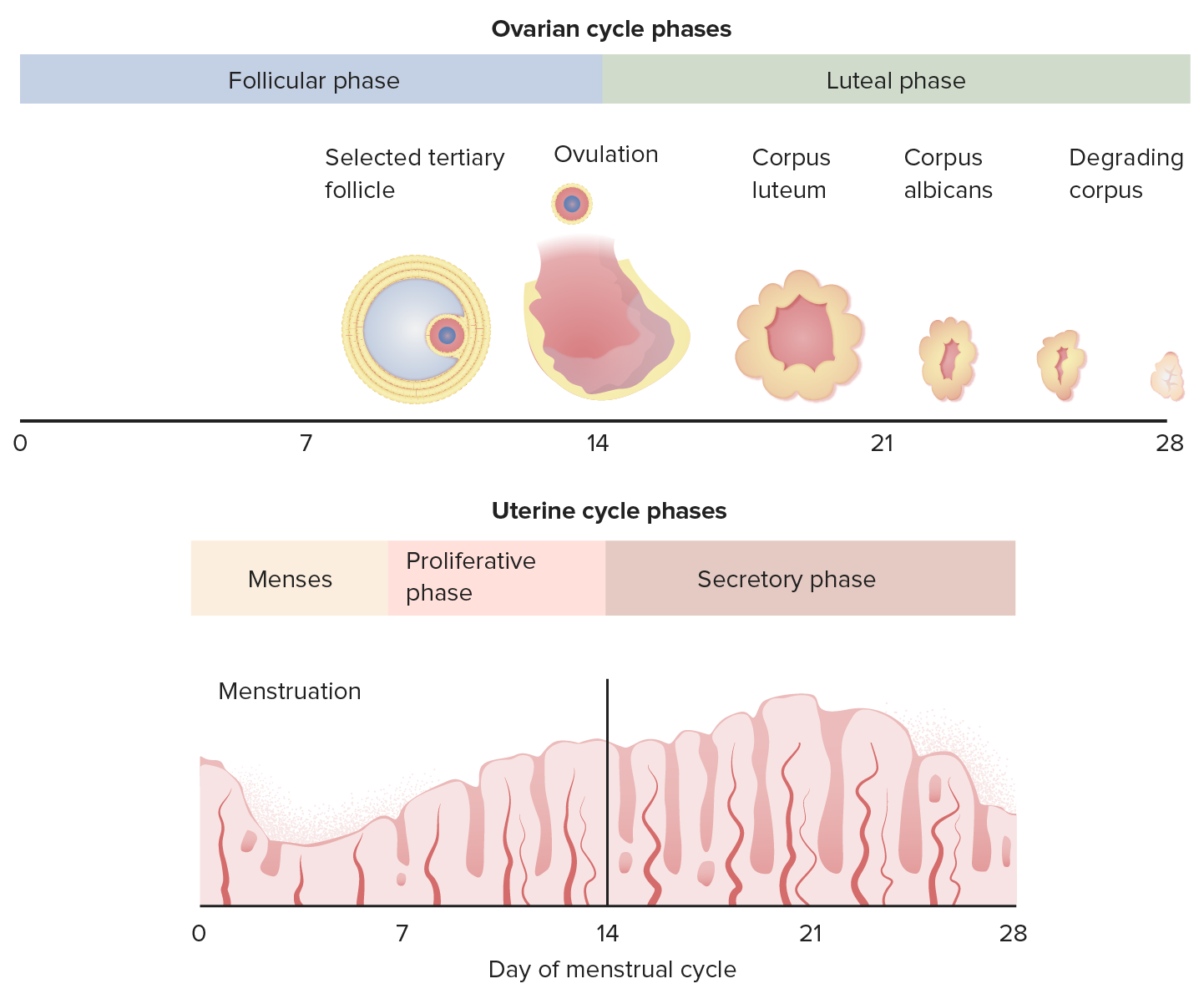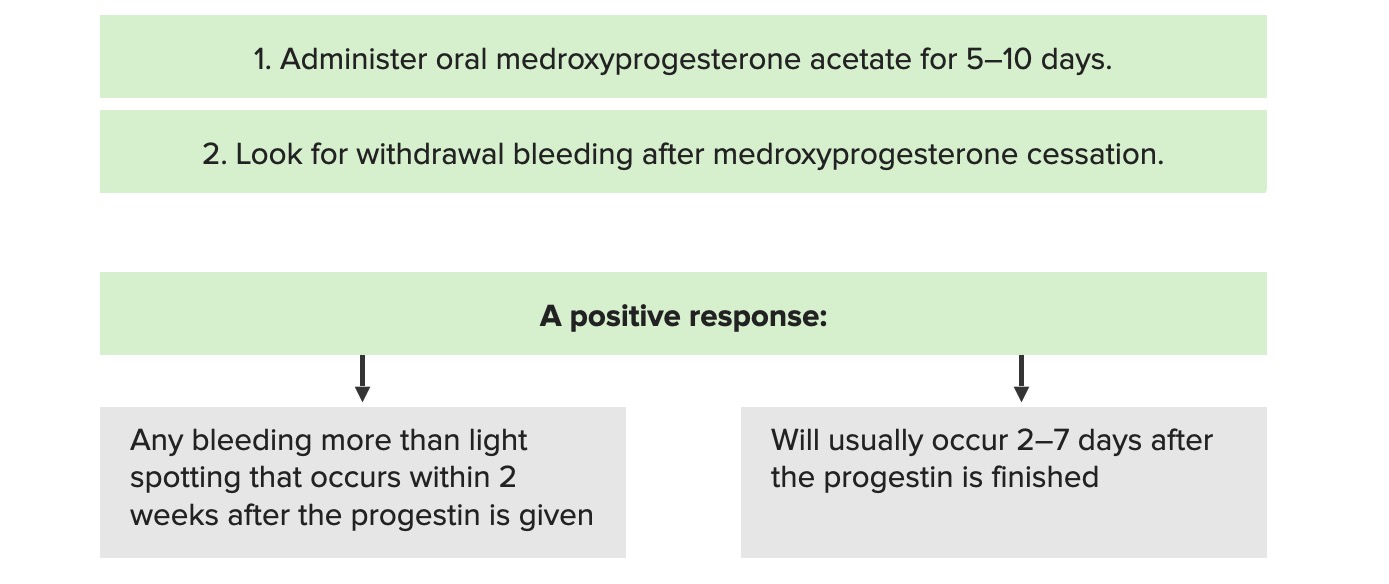Playlist
Show Playlist
Hide Playlist
Hypothalamic Amenorrhea and Case Studies
-
Slides Primary and Secondary Amenorrhea.pdf
-
Download Lecture Overview
00:00 Let's now focus on hypothalamic amenorrhea. This is a diagnosis of exclusion. That means you should rule out other causes of secondary amenorrhea before signing this diagnosis. This is typical in women who have eating disorders such as anorexia and bulimia. This is what a typical anorexic patient could look like. They may have a poor body image and actually think that they are too fat despite looking in the mirror and they actually are quite thin. You can also see hypothalamic amenorrhea in runners or women who do quite a bit of exercise. This is sometimes called the female athlete triad. As they exercise a lot, they don’t have menstrual cycles and they may have some bone issues related to the fact that they are exercising and have low estrogen levels. This type of amenorrhea is typically seen in women who are type A. They're typically perfectionist and they are under some type of stress. You see this in young high school girls and also in young college girls who feel pressure to perform. Let's now talk about the endocrine profile in a hypothalamic amenorrhea patient especially one who is anorexic. Their leptin is low. Think of L for leptin, L for low. Their cortisol is high. Remember, they're under stress. Remember that they don't have a menstrual cycle so likely they have a decreased GnRH. 01:35 They would have a low or normal FSH. They will have a low LH likely and a low estradiol. Again, because the gonadotropins are not being released as they should be. They will have a high ghrelin. 01:52 Ghrelin to me is easy to remember if you remember your stomach growls when you're hungry. They typically will have a low TSH and a low T3. Let's review now primary versus secondary amenorrhea. 02:09 Primary amenorrhea can be associated with Turner syndrome. There is a separate lecture set that you can look at to learn more about Turner syndrome 45,XO. You can also have primary amenorrhea with tall stature and no or scant pubic hair and normal breast development. This is commonly seen in androgen insensitivity syndrome. You can have primary amenorrhea with a vagina and that can be absent or short or dimpled. This is typical with Mullerian agenesis. Secondary amenorrhea can be associated with galactorrhea which means milky discharge from breast. This will be an indication that the prolactin is elevated. Secondary amenorrhea can also occur in the setting of hirsutism. This is common with PCOS. For more information about PCOS, look at the lecture regarding PCOS. Let’s now talk about management. This is a hard topic. Many of the causes of amenorrhea are quite different. So depending on the amenorrhea, primary or secondary, the management is quite complex. Let's go over some cases as this may help you. "A 14-year-old girl presents to the emergency room. She has abdominal pain. When you talk to her, she gives you a history of cyclical pain. She has never had a period but is normally developed with Tanner IV stage breast and Tanner V pubic hair." What do you want to know about this patient? What could her diagnosis be? I'll give you a second to think about it. This patient has what's called cryptomenorrhea likely to hematocolpos which is causing her pain. Cryptomenorrhea means the endometrium is actually shedding but the endometrial blood can't be released. Usually, there are some structural anatomic defects that cause this to happen. The blood accumulates in the vagina and this is called hematocolpos. This patient has severe pain because the bleeding is accumulating in her vagina. Let's now talk about secondary amenorrhea. Here's the case of a "30-year-old woman who has secondary amenorrhea. Her BMI is 17 and she has a history of anorexia nervosa." What's your differential diagnosis and why? How would you treat her if she didn't want to get pregnant and why would you utilize that treatment? Think about it. Okay. This patient likely has hypothalamic amenorrhea. This is associated with a low BMI and eating disorders but definitely this is a diagnosis of exclusion and you should rule out other things such as hyperprolactinemia or ovarian insufficiency or ovarian failure. This patient is at risk for osteoporosis, she should be taking estrogen. Because the easiest dosing of estrogen is in OCP, she can take that. If you'd like to know more about osteoporosis, that's a separate lecture set. Thank you for paying attention and good luck on your exam.
About the Lecture
The lecture Hypothalamic Amenorrhea and Case Studies by Lynae Brayboy, MD is from the course Abnormal Menstruation. It contains the following chapters:
- Hypothalamic Amenorrhea- Exclusion
- Case Studies
Included Quiz Questions
Which of the following is increased in patients with anorexia nervosa?
- Ghrelin
- Estradiol
- GnRH
- LH
- Leptin
Which of the following best describes a patient with a vagina that ends blindly without a cervix at the vaginal apex?
- Mullerian agenesis
- Hypogonadism
- Turner syndrome
- PCOS
- Hyperprolactinemia
A 15-year-old patient has cyclical pain but doesn't get menses and doesn't have any children. She says "I had to buy a new bra because my breasts have enlarged." She also notes monthly abdominal pain. Which of the following is the most likely diagnosis?
- Hematocolpos
- Endometriosis
- Prolactinoma
- Pregnancy
- PCOS
Customer reviews
1,5 of 5 stars
| 5 Stars |
|
0 |
| 4 Stars |
|
0 |
| 3 Stars |
|
0 |
| 2 Stars |
|
2 |
| 1 Star |
|
2 |
Keeps saying there is another lecture for this and that, also goes fast and doesn't provide sufficient information.
The lecturer keeps on saying " There's a separate lecture for this topic".
im not paying the lecturer to read off the slides... (look at Carlo Rajs Videos , they are amazing) someone else also mentioned that there is too much look at the other lecture.. give detailed explanations .. one liners don't work anymore. or if you want, post links to other videos which do explain pathophysio or treatment. Why is there no mention of diagnostic work up treatment etc?
This lecture (over the last 3) is a bit problematic - there should be 2 versions: a version for students who are looking for information going along side classes and another (this one) more suited for USMLE fast review. Too much "see the other video for more info" when a 1 sentence summary and link to the other video to pause and expand knowledge would be helpful. However, regardless of knowledge the clinical case studies should really emphasize thought process and diagnostic workup. This was "think about what it could be" then provides a barebones answer which you also couldn't have reached terminology wise because it was never defined until reaching the case study. A detailed map, explanation and full answer with details would have been better.





